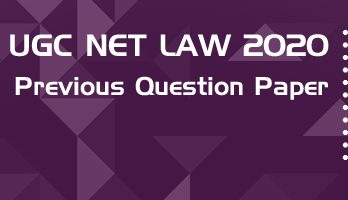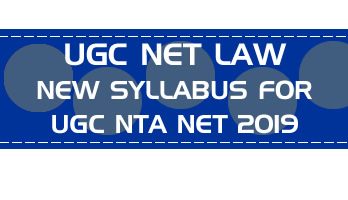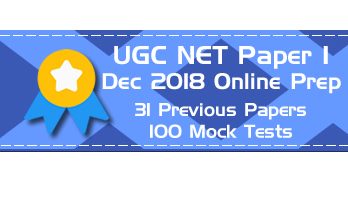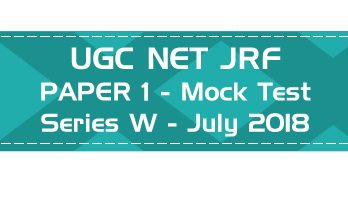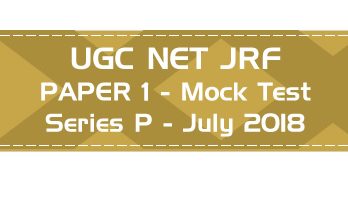- Latest Pattern Mock Tests including comprehension based questions
- Previous Question Papers with Answer Keys - From 2004 till the most recent exam
- 75 Full Length Mock Tests - New Pattern Paper II, with 100 questions each
- 50 Mini Practice Mock tests - with 25 questions each
- Unlimited Practice - New Questions in every attempt of all mocks
- Questions & Answer Choices randomly shuffled in every attempt for better practice
- Database of over 11000+ MCQs covering the entire syllabus
- Unlimited access and practice for one year from the date of purchase
- Accessible 24 x 7 via Smart-Phone browsers and Desktops
Authentic Feedback from previous LawMint users :
I got AIR 21 in CLAT PG. Thank you so much. Your mocks helped me a lot in my preparation 🙂 - Ayushi Jain
I have subscribed to your CLAT PG program and got AIR 36 in this year CLAT PG. I have also secured AIR 54 in AILET PG exam. I would like to thank you. Your mock paper really helps a lot - Shrashank Tripathi
I would like to thank you for the CLAT PG LLM COURSE. Practising mock tests there helped me in getting confidence and hence I was able to get AIR 45 in CLAT PG LLM - Akshay Awasthi
A year back, I relied on the IIT Kharagpur RGSOIPL mock test series by LawMint to prepare for my RGSOIPL entrance test. Few months back, I relied on your UGC NET Law series to prepare for UGC NET. I was the topper of the RGSOIPL entrance, and have cracked JRF in UGC NET. All thanks to LawMint - Anshuman Sahoo
"I got AIR 18 in CLAT PG and General Category rank 28 in AILET PG. I want to thank you for helping me practice well in controlled conditions from any place. It gave me a lot of confidence and I took the tests while travelling too. I also made it to IIT Kharagpur." - Vinodharani
"Lawmint has been of great help to me in securing AIR 25 in AILET PG and AIR 29 in CLAT PG examinations. The subjective and objective approach of the test series kept me up to date with the latest exam pattern." - Bhawna Nanda
"I, Nimmy Saira Zachariah joined you clat test series. I cleared AILET PG with 30th rank. Your test series were of immense help as it gave me clear idea of where my preparations stand thank you once again law mint." - Nimmy S Z
"Hey guys. Where do I start? If I thought that getting AIR 59 in Clat PG was it, then how wrong I was. With Lawmint now I have cracked UGC NET as well." - Joyanta Chakraborty
Note : Answer Keys to all Previous Question Papers published on LawMint are available to registered users of LawMint.com Online Practice Packs.
Check out all the HECI NTA NET or UGC CBSE NET Paper 1 previous question papers here : Previous Papers & Mock Tests
Note : UGC has rolled out a revised syllabus for both Papers 1 & 2 from Jan 2019 onward.
1. The English word ‘Communication’ is derived from the words
– Communis and Communicare
– Communist and Commune
– Communism and Communalism
– Communion and Common sense
2. Chinese Cultural Revolution leader Mao Zedong used a type of communication to talk to the masses is known as
– Mass line communication
– Group communication
– Participatory communication
– Dialogue communication
3. Conversing with the spirits and ancestors is termed as
– Transpersonal communication
– Intrapersonal communication
– Interpersonal communication
– Face-to-face communication
4. The largest circulated daily newspaper among the following is
– The Times of India
– The Indian Express
– The Hindu
– The Deccan Herald
5. The pioneer of the silent feature film in India was
– K.A. Abbas
– Satyajit Ray
– B.R. Chopra
– Dada Sahib Phalke
6. Classroom communication of a teacher rests on the principle of
– Infotainment
– Edutainment
– Entertainment
– Power equation
7. The missing number in the series : 0, 6, 24, 60, 120, ?, 336, is
– 240
– 220
– 280
– 210
8. A group of 7 members having a majority of boys is to be formed out of 6 boys and 4 girls. The number of ways the group can be formed is
– 80
– 100
– 90
– 110
9. The number of observations in a group is 40. The average of the first 10 members is 4.5 and the average of the remaining 30 members is 3.5. The average of the whole group is
– 4
– 15/2
– 15/4
– 6
10. If MOHAN is represented by the code KMFYL, then COUNT will be represented by
– AMSLR
– MSLAR
– MASRL
– SAMLR
11. The sum of the ages of two persons A and B is 50. 5 years ago, the ratio of their ages was 5/3. The present age of A and B are
– 30, 20
– 35, 15
– 38, 12
– 40, 10
12. Let a means minus (-), b means multiplied by (X), C means divided by (/) and D means plus (+). The value of 90 D 9 a 29 C 10 b 2 is
– 8
– 10
– 12
– 14
13. Consider the Assertion-I and Assertion-II and select the right code given below:
Assertion-I: Even Bank-lockers are not safe. Thieves can break them and take away your wealth. But thieves cannot go to heaven. So you should keep your wealth in heaven.
Assertion-II: The difference of skin-colour of beings is because of the distance from the sun and not because of some permanent traits. Skin-colour is the result of body’s reaction to the sun and its rays.
– Both the assertions-I and II are forms of argument.
– The assertion-I is an argument but the assertion-II is not.
– The assertion-II is an argument but the assertion-I is not.
– Both the assertions are explanations of facts.
14. By which of the following proposition, the proposition ‘some men are not honest’ is contradicted?
– All men are honest.
– Some men are honest.
– No men are honest.
– All of the given choices.
15. A stipulative definition is
– always true
– always false
– sometimes true sometimes false
– neither true nor false
16. Choose the appropriate alternative given in the codes to replace the question mark.
Examiner – Examinee, Pleader – Client, Preceptor -?
– Customer
– Path-finder
– Perceiver
– Disciple
17. If the statement ‘most of the students are obedient’ is taken to be true, which one of the following pair of statements can be claimed to be true?
I. All obedient persons are students.
II. All students are obedient.
III. Some students are obedient.
IV. Some students are not disobedient.
– I & II
– II & III
– III & IV
– II & IV
18. A deductive argument claims that:
I. The conclusion does not claim something more than that which is contained in the premises.
II. The conclusion is supported by the premise/premises conclusively.
III. If the conclusion is false, then premise/premises may be either true or false.
IV. If premise/combination of premises is true, then conclusion must be true.
– I and II
– I and III
– II and III
– All of the given choices
19. On the basis of the data given in the following table, answer the question below :
Government Expenditures on Social Services (As percent of total expenditure)
SI. No. | Items | 2007-08 | 2008-09 | 2009-10 | 2010-11 |
Social Services | 11.06 | 12.94 | 13.06 | 14.02 | |
(a) | Education, sports & youth affairs | 4.02 | 4.04 | 3.96 | 4.46 |
(b) | Health & family welfare | 2.05 | 1.91 | 1.9 | 2.03 |
(c) | Water supply, housing, etc. | 2.02 | 2.31 | 2.2 | 2.27 |
(d) | Information & broadcasting | 0.22 | 0.22 | 0.2 | 0.22 |
(e) | Welfare to SC/ST & OBC | 0.36 | 0.35 | 0.41 | 0.63 |
(f) | Labour and employment | 0.27 | 0.27 | 0.22 | 0.25 |
(g) | Social welfare & nutrition | 0.82 | 0.72 | 0.79 | 1.06 |
(h) | North-eastern areas | 0 | 1.56 | 1.5 | 1.75 |
(i) | Other social services | 1.29 | 1.55 | 1.87 | 1.34 |
Total Government expenditure | 100 | 100 | 100 | 100 |
How many activities in the social services are there where the expenditure has been less than 5 percent of the total expenditures incurred on the social services in 2008-09?
– One
– Three
– Five
– All of the given choices
20. On the basis of the data given in the following table, answer the question below :
Government Expenditures on Social Services (As percent of total expenditure)
SI. No. | Items | 2007-08 | 2008-09 | 2009-10 | 2010-11 |
Social Services | 11.06 | 12.94 | 13.06 | 14.02 | |
(a) | Education, sports & youth affairs | 4.02 | 4.04 | 3.96 | 4.46 |
(b) | Health & family welfare | 2.05 | 1.91 | 1.9 | 2.03 |
(c) | Water supply, housing, etc. | 2.02 | 2.31 | 2.2 | 2.27 |
(d) | Information & broadcasting | 0.22 | 0.22 | 0.2 | 0.22 |
(e) | Welfare to SC/ST & OBC | 0.36 | 0.35 | 0.41 | 0.63 |
(f) | Labour and employment | 0.27 | 0.27 | 0.22 | 0.25 |
(g) | Social welfare & nutrition | 0.82 | 0.72 | 0.79 | 1.06 |
(h) | North-eastern areas | 0 | 1.56 | 1.5 | 1.75 |
(i) | Other social services | 1.29 | 1.55 | 1.87 | 1.34 |
Total Government expenditure | 100 | 100 | 100 | 100 |
In which year, the expenditures on the social services have increased at the highest rate?
– 2007-08
– 2008-09
– 2009-10
– 2010-11
21. On the basis of the data given in the following table, answer the question below :
Government Expenditures on Social Services (As percent of total expenditure)
SI. No. | Items | 2007-08 | 2008-09 | 2009-10 | 2010-11 |
Social Services | 11.06 | 12.94 | 13.06 | 14.02 | |
(a) | Education, sports & youth affairs | 4.02 | 4.04 | 3.96 | 4.46 |
(b) | Health & family welfare | 2.05 | 1.91 | 1.9 | 2.03 |
(c) | Water supply, housing, etc. | 2.02 | 2.31 | 2.2 | 2.27 |
(d) | Information & broadcasting | 0.22 | 0.22 | 0.2 | 0.22 |
(e) | Welfare to SC/ST & OBC | 0.36 | 0.35 | 0.41 | 0.63 |
(f) | Labour and employment | 0.27 | 0.27 | 0.22 | 0.25 |
(g) | Social welfare & nutrition | 0.82 | 0.72 | 0.79 | 1.06 |
(h) | North-eastern areas | 0 | 1.56 | 1.5 | 1.75 |
(i) | Other social services | 1.29 | 1.55 | 1.87 | 1.34 |
Total Government expenditure | 100 | 100 | 100 | 100 |
Which of the following activities remains almost stagnant in terms of share of expenditures?
– North-eastern areas
– Welfare to SC/ST & OBC
– Information & broadcasting
– Social welfare and nutrition
22. On the basis of the data given in the following table, answer the question below :
Government Expenditures on Social Services (As percent of total expenditure)
SI. No. | Items | 2007-08 | 2008-09 | 2009-10 | 2010-11 |
Social Services | 11.06 | 12.94 | 13.06 | 14.02 | |
(a) | Education, sports & youth affairs | 4.02 | 4.04 | 3.96 | 4.46 |
(b) | Health & family welfare | 2.05 | 1.91 | 1.9 | 2.03 |
(c) | Water supply, housing, etc. | 2.02 | 2.31 | 2.2 | 2.27 |
(d) | Information & broadcasting | 0.22 | 0.22 | 0.2 | 0.22 |
(e) | Welfare to SC/ST & OBC | 0.36 | 0.35 | 0.41 | 0.63 |
(f) | Labour and employment | 0.27 | 0.27 | 0.22 | 0.25 |
(g) | Social welfare & nutrition | 0.82 | 0.72 | 0.79 | 1.06 |
(h) | North-eastern areas | 0 | 1.56 | 1.5 | 1.75 |
(i) | Other social services | 1.29 | 1.55 | 1.87 | 1.34 |
Total Government expenditure | 100 | 100 | 100 | 100 |
Which of the following item’s expenditure share is almost equal to the remaining three items in the given years?
– Information & broadcasting
– Welfare to SC/ST and OBC
– Labour and employment
– Social welfare & nutrition
23. On the basis of the data given in the following table, answer the question below :
Government Expenditures on Social Services (As percent of total expenditure)
SI. No. | Items | 2007-08 | 2008-09 | 2009-10 | 2010-11 |
Social Services | 11.06 | 12.94 | 13.06 | 14.02 | |
(a) | Education, sports & youth affairs | 4.02 | 4.04 | 3.96 | 4.46 |
(b) | Health & family welfare | 2.05 | 1.91 | 1.9 | 2.03 |
(c) | Water supply, housing, etc. | 2.02 | 2.31 | 2.2 | 2.27 |
(d) | Information & broadcasting | 0.22 | 0.22 | 0.2 | 0.22 |
(e) | Welfare to SC/ST & OBC | 0.36 | 0.35 | 0.41 | 0.63 |
(f) | Labour and employment | 0.27 | 0.27 | 0.22 | 0.25 |
(g) | Social welfare & nutrition | 0.82 | 0.72 | 0.79 | 1.06 |
(h) | North-eastern areas | 0 | 1.56 | 1.5 | 1.75 |
(i) | Other social services | 1.29 | 1.55 | 1.87 | 1.34 |
Total Government expenditure | 100 | 100 | 100 | 100 |
Which of the following items of social services has registered the highest rate of increase in expenditures during 2007-08 to 2010-11?
– Education, sports & youth affairs
– Welfare to SC/ST & OBC
– Social welfare & nutrition
– Overall social services
24. On the basis of the data given in the following table, answer the question below :
Government Expenditures on Social Services (As percent of total expenditure)
SI. No. | Items | 2007-08 | 2008-09 | 2009-10 | 2010-11 |
Social Services | 11.06 | 12.94 | 13.06 | 14.02 | |
(a) | Education, sports & youth affairs | 4.02 | 4.04 | 3.96 | 4.46 |
(b) | Health & family welfare | 2.05 | 1.91 | 1.9 | 2.03 |
(c) | Water supply, housing, etc. | 2.02 | 2.31 | 2.2 | 2.27 |
(d) | Information & broadcasting | 0.22 | 0.22 | 0.2 | 0.22 |
(e) | Welfare to SC/ST & OBC | 0.36 | 0.35 | 0.41 | 0.63 |
(f) | Labour and employment | 0.27 | 0.27 | 0.22 | 0.25 |
(g) | Social welfare & nutrition | 0.82 | 0.72 | 0.79 | 1.06 |
(h) | North-eastern areas | 0 | 1.56 | 1.5 | 1.75 |
(i) | Other social services | 1.29 | 1.55 | 1.87 | 1.34 |
Total Government expenditure | 100 | 100 | 100 | 100 |
Which of the following items has registered the highest rate of decline in terms of expenditure during 2007-08 to 2009-10?
– Labour and employment
– Health & family welfare
– Social welfare & nutrition
– Education, sports & youth affairs
25. ALU stands for
– American Logic Unit
– Alternate Local Unit
– Alternating Logic Unit
– Arithmetic Logic Unit
26. A Personal Computer uses a number of chips mounted on a circuit board called
– Microprocessor
– System Board
– Daughter Board
– Mother Board
27. Computer Virus is a
– Hardware
– Bacteria
– Software
– None of the given choices
28. Which one of the following is correct?
– (17) base 10 = (17) base 16
– (17) base 10 = (17) base 8
– (17) base 10 = (10111) base 2
– (17) base 10 = (10001) base 2
29. The file extension of MS-Word document in Office 2007 is _______.
– .pdf
– .doc
– .docx
– .txt
30. _______ is a protocol used by e-mail clients to download e-mails to your computer.
– TCP
– FTP
– SMTP
– POP
31. Which of the following is a source of methane?
– Wetlands
– Foam Industry
– Thermal Power Plants
– Cement Industry
32. ‘Minamata disaster’ in Japan was caused by pollution due to
– Lead
– Mercury
– Cadmium
– Zinc
33. Biomagnification means increase in the
– concentration of pollutants in living organisms
– number of species
– size of living organisms
– biomass
34. Nagoya Protocol is related to
– Climate change
– Ozone depletion
– Hazardous waste
– Biodiversity
35. The second most important source after fossil fuels contributing to India’s energy needs is
– Solar energy
– Nuclear energy
– Hydropower
– Wind energy
36. In case of earthquakes, an increase of magnitude 1 on Richter Scale implies
– a ten-fold increase in the amplitude of seismic waves.
– a ten-fold increase in the energy of the seismic waves.
– two-fold increase in the amplitude of seismic waves.
– two-fold increase in the energy of seismic waves.
37. Which of the following is not a measure of Human Development Index?
– Literacy Rate
– Gross Enrolment
– Sex Ratio
– Life Expectancy
38. India has the highest number of students in colleges after
– the U.K.
– the U.S.A.
– Australia
– Canada
39. Which of the following statement(s) is/are not correct about the Attorney General of India?
1. The President appoints a person, who is qualified to be a Judge of a High Court, to be the Attorney General of India.
2. He has the right of audience in all the Courts of the country.
3. He has the right to take part in the proceedings of the Lok Sabha and the Rajya Sabha.
4. He has a fixed tenure.
– 1 and 4
– 2, 3 and 4
– 3 and 4
– 3 only
40. Which of the following prefix President Pranab Mukherjee desires to be discontinued while interacting with Indian dignitaries as well as in official notings ?
1. His Excellency
2. Mahamahim
3. Hon’ble
4. Shri/Smt.
– 1 and 3
– 2 and 3
– 1 and 2
– 1, 2 and 3
41. Which of the following can be done under conditions of financial emergency?
1. State Legislative Assemblies can be abolished.
2. Central Government can acquire control over the budget and expenditure of States.
3. Salaries of the Judges of the High Courts and the Supreme Court can be reduced.
4. Right to Constitutional Remedies can be suspended.
– 1, 2 and 3
– 2, 3 and 4
– 1 and 2
– 2 and 3
42. Match List – I with List – II and select the correct answer from the codes given below:
List – I
(a) Poverty Reduction Programme
(b) Human Development Scheme
(c) Social Assistance Scheme
(d) Minimum Need Scheme
List – II
(i) Mid-day Meals
(ii) Indira Awas Yojana (IAY)
(iii) National Old Age Pension (NOAP)
(iv) MNREGA
Choose the answer corresponding to the sequence : (a) (b) (c) (d)
– (iv) (i) (iii) (ii)
– (ii) (iii) (iv) (i)
– (iii) (iv) (i) (ii)
– (iv) (iii) (ii) (i)
43. For an efficient and durable learning, learner should have
– ability to learn only
– requisite level of motivation only
– opportunities to learn only
– desired level of ability and motivation
44. Classroom communication must be
– Teacher centric
– Student centric
– General centric
– Textbook centric
45. The best method of teaching is to
– impart information
– ask students to read books
– suggest good reference material
– initiate a discussion and participate in it
46. Interaction inside the classroom should generate
– Argument
– Information
– Ideas
– Controversy
47. “Spare the rod and spoil the child”, gives the message that
– punishment in the class should be banned.
– corporal punishment is not acceptable.
– undesirable behaviour must be punished.
– children should be beaten with rods.
48. The type of communication that the teacher has in the classroom, is termed as
– Interpersonal
– Mass communication
– Group communication
– Face-to-face communication
49. Which one of the following is an indication of the quality of a research journal?
– Impact factor
– h-index
– g-index
– i10-index
50. Good ‘research ethics’ means
– Not disclosing the holdings of shares/stocks in a company that sponsors your research.
– Assigning a particular research problem to one Ph.D./research student only.
– Discussing with your colleagues confidential data from a research paper that you are reviewing for an academic journal.
– Submitting the same research manuscript for publishing in more than one journal.
51. Which of the following sampling methods is based on probability?
– Convenience sampling
– Quota sampling
– Judgement sampling
– Stratified sampling
52. Which one of the following references is written according to American Psychological Association (APA) format?
– Sharma, V. (2010). Fundamentals of Computer Science. New Delhi : Tata McGraw Hill
– Sharma, V. 2010. Fundamentals of Computer Science. New Delhi : Tata McGraw Hill
– Sharma.V. 2010. Fundamentals of Computer Science, New Delhi : Tata McGraw Hill
– Sharma, V. (2010), Fundamentals of Computer Science, New Delhi : Tata McGraw Hill
53. Arrange the following steps of research in correct sequence :
1. Identification of research problem
2. Listing of research objectives
3. Collection of data
4. Methodology
5. Data analysis
6. Results and discussion
– 1 – 2 – 3 – 4 – 5 – 6
– 1 – 2 – 4 – 3 – 5 – 6
– 2 – 1 – 3 – 4 – 5 – 6
– 2 – 1 – 4 – 3 – 5 – 6
54. Identify the incorrect statement:
– A hypothesis is made on the basis of limited evidence as a starting point for further investigations.
– A hypothesis is a basis for reasoning without any assumption of its truth.
– Hypothesis is a proposed explanation for a phenomenon.
– Scientific hypothesis is a scientific theory.
55. Read the following passage carefully and answer the question : The popular view of towns and cities in developing countries and of urbanization process is that despite the benefits and comforts it brings, the emergence of such cities connotes environmental degradation, generation of slums and squatters, urban poverty, unemployment, crimes, lawlessness, traffic chaos etc. But what is the reality? Given the unprecedental increase in urban population over the last 50 years from 300 million in 1950 to 2 billion in 2000 in developing countries, the wonder really is how well the world has coped, and not how badly.
In general, the urban quality of life has improved in terms of availability of water and sanitation, power, health and education, communication and transport. By way of illustration, a large number of urban residents have been provided with improved water in urban areas in Asia’s largest countries such as China, India, Indonesia and Philippines. Despite that, the access to improved water in terms of percentage of total urban population seems to have declined during the last decade of 20th century, though in absolute numbers, millions of additional urbanites, have been provided improved services. These countries have made significant progress in the provision of sanitation services too, together, providing for an additional population of more than 293 million citizens within a decade (1990-2000). These improvements must be viewed against the backdrop of rapidly increasing urban population, fiscal crunch and strained human resources and efficient and quality-oriented public management.
The popular view about the process of urbanization in developing countries is
– Positive
– Negative
– Neutral
– Unspecified
56. Read the following passage carefully and answer the question : The popular view of towns and cities in developing countries and of urbanization process is that despite the benefits and comforts it brings, the emergence of such cities connotes environmental degradation, generation of slums and squatters, urban poverty, unemployment, crimes, lawlessness, traffic chaos etc. But what is the reality? Given the unprecedental increase in urban population over the last 50 years from 300 million in 1950 to 2 billion in 2000 in developing countries, the wonder really is how well the world has coped, and not how badly.
In general, the urban quality of life has improved in terms of availability of water and sanitation, power, health and education, communication and transport. By way of illustration, a large number of urban residents have been provided with improved water in urban areas in Asia’s largest countries such as China, India, Indonesia and Philippines. Despite that, the access to improved water in terms of percentage of total urban population seems to have declined during the last decade of 20th century, though in absolute numbers, millions of additional urbanites, have been provided improved services. These countries have made significant progress in the provision of sanitation services too, together, providing for an additional population of more than 293 million citizens within a decade (1990-2000). These improvements must be viewed against the backdrop of rapidly increasing urban population, fiscal crunch and strained human resources and efficient and quality-oriented public management.
The average annual increase in the number of urbanites in developing countries, from 1950 to 2000 A.D. was close to
– 30 million
– 40 million
– 50 million
– 60 million
57. Read the following passage carefully and answer the question : The popular view of towns and cities in developing countries and of urbanization process is that despite the benefits and comforts it brings, the emergence of such cities connotes environmental degradation, generation of slums and squatters, urban poverty, unemployment, crimes, lawlessness, traffic chaos etc. But what is the reality? Given the unprecedental increase in urban population over the last 50 years from 300 million in 1950 to 2 billion in 2000 in developing countries, the wonder really is how well the world has coped, and not how badly.
In general, the urban quality of life has improved in terms of availability of water and sanitation, power, health and education, communication and transport. By way of illustration, a large number of urban residents have been provided with improved water in urban areas in Asia’s largest countries such as China, India, Indonesia and Philippines. Despite that, the access to improved water in terms of percentage of total urban population seems to have declined during the last decade of 20th century, though in absolute numbers, millions of additional urbanites, have been provided improved services. These countries have made significant progress in the provision of sanitation services too, together, providing for an additional population of more than 293 million citizens within a decade (1990-2000). These improvements must be viewed against the backdrop of rapidly increasing urban population, fiscal crunch and strained human resources and efficient and quality-oriented public management.
The reality of urbanization is reflected in
– How well the situation has been managed.
– How badly the situation has gone out of control.
– How fast has been the tempo of urbanization.
– How fast the environment has degraded.
58. Read the following passage carefully and answer the question : The popular view of towns and cities in developing countries and of urbanization process is that despite the benefits and comforts it brings, the emergence of such cities connotes environmental degradation, generation of slums and squatters, urban poverty, unemployment, crimes, lawlessness, traffic chaos etc. But what is the reality? Given the unprecedental increase in urban population over the last 50 years from 300 million in 1950 to 2 billion in 2000 in developing countries, the wonder really is how well the world has coped, and not how badly.
In general, the urban quality of life has improved in terms of availability of water and sanitation, power, health and education, communication and transport. By way of illustration, a large number of urban residents have been provided with improved water in urban areas in Asia’s largest countries such as China, India, Indonesia and Philippines. Despite that, the access to improved water in terms of percentage of total urban population seems to have declined during the last decade of 20th century, though in absolute numbers, millions of additional urbanites, have been provided improved services. These countries have made significant progress in the provision of sanitation services too, together, providing for an additional population of more than 293 million citizens within a decade (1990-2000). These improvements must be viewed against the backdrop of rapidly increasing urban population, fiscal crunch and strained human resources and efficient and quality-oriented public management.
Which one of the following is not considered as an indicator of urban quality of life?
– Tempo of urbanization
– Provision of basic services
– Access to social amenities
– All of the given choices
59. Read the following passage carefully and answer the question : The popular view of towns and cities in developing countries and of urbanization process is that despite the benefits and comforts it brings, the emergence of such cities connotes environmental degradation, generation of slums and squatters, urban poverty, unemployment, crimes, lawlessness, traffic chaos etc. But what is the reality? Given the unprecedental increase in urban population over the last 50 years from 300 million in 1950 to 2 billion in 2000 in developing countries, the wonder really is how well the world has coped, and not how badly.
In general, the urban quality of life has improved in terms of availability of water and sanitation, power, health and education, communication and transport. By way of illustration, a large number of urban residents have been provided with improved water in urban areas in Asia’s largest countries such as China, India, Indonesia and Philippines. Despite that, the access to improved water in terms of percentage of total urban population seems to have declined during the last decade of 20th century, though in absolute numbers, millions of additional urbanites, have been provided improved services. These countries have made significant progress in the provision of sanitation services too, together, providing for an additional population of more than 293 million citizens within a decade (1990-2000). These improvements must be viewed against the backdrop of rapidly increasing urban population, fiscal crunch and strained human resources and efficient and quality-oriented public management.
The author in this passage has tried to focus on
– Extension of Knowledge
– Generation of Environmental Consciousness
– Analytical Reasoning
– Descriptive Statement
60. Read the following passage carefully and answer the question : The popular view of towns and cities in developing countries and of urbanization process is that despite the benefits and comforts it brings, the emergence of such cities connotes environmental degradation, generation of slums and squatters, urban poverty, unemployment, crimes, lawlessness, traffic chaos etc. But what is the reality? Given the unprecedental increase in urban population over the last 50 years from 300 million in 1950 to 2 billion in 2000 in developing countries, the wonder really is how well the world has coped, and not how badly.
In general, the urban quality of life has improved in terms of availability of water and sanitation, power, health and education, communication and transport. By way of illustration, a large number of urban residents have been provided with improved water in urban areas in Asia’s largest countries such as China, India, Indonesia and Philippines. Despite that, the access to improved water in terms of percentage of total urban population seems to have declined during the last decade of 20th century, though in absolute numbers, millions of additional urbanites, have been provided improved services. These countries have made significant progress in the provision of sanitation services too, together, providing for an additional population of more than 293 million citizens within a decade (1990-2000). These improvements must be viewed against the backdrop of rapidly increasing urban population, fiscal crunch and strained human resources and efficient and quality-oriented public management.
In the above passage, the author intends to state
– The hazards of the urban life
– The sufferings of the urban life
– The awareness of human progress
– the limits to growth
- Latest Pattern Mock Tests including comprehension based questions
- Previous Question Papers with Answer Keys - From 2004 till the most recent exam
- 75 Full Length Mock Tests - New Pattern Paper II, with 100 questions each
- 50 Mini Practice Mock tests - with 25 questions each
- Unlimited Practice - New Questions in every attempt of all mocks
- Questions & Answer Choices randomly shuffled in every attempt for better practice
- Database of over 11000+ MCQs covering the entire syllabus
- Unlimited access and practice for one year from the date of purchase
- Accessible 24 x 7 via Smart-Phone browsers and Desktops
Authentic Feedback from previous LawMint users :
I got AIR 21 in CLAT PG. Thank you so much. Your mocks helped me a lot in my preparation 🙂 - Ayushi Jain
I have subscribed to your CLAT PG program and got AIR 36 in this year CLAT PG. I have also secured AIR 54 in AILET PG exam. I would like to thank you. Your mock paper really helps a lot - Shrashank Tripathi
I would like to thank you for the CLAT PG LLM COURSE. Practising mock tests there helped me in getting confidence and hence I was able to get AIR 45 in CLAT PG LLM - Akshay Awasthi
A year back, I relied on the IIT Kharagpur RGSOIPL mock test series by LawMint to prepare for my RGSOIPL entrance test. Few months back, I relied on your UGC NET Law series to prepare for UGC NET. I was the topper of the RGSOIPL entrance, and have cracked JRF in UGC NET. All thanks to LawMint - Anshuman Sahoo
"I got AIR 18 in CLAT PG and General Category rank 28 in AILET PG. I want to thank you for helping me practice well in controlled conditions from any place. It gave me a lot of confidence and I took the tests while travelling too. I also made it to IIT Kharagpur." - Vinodharani
"Lawmint has been of great help to me in securing AIR 25 in AILET PG and AIR 29 in CLAT PG examinations. The subjective and objective approach of the test series kept me up to date with the latest exam pattern." - Bhawna Nanda
"I, Nimmy Saira Zachariah joined you clat test series. I cleared AILET PG with 30th rank. Your test series were of immense help as it gave me clear idea of where my preparations stand thank you once again law mint." - Nimmy S Z
"Hey guys. Where do I start? If I thought that getting AIR 59 in Clat PG was it, then how wrong I was. With Lawmint now I have cracked UGC NET as well." - Joyanta Chakraborty
Note : Answer Keys to all Previous Question Papers published on LawMint are available to registered users of our Online Practice Packs.
Check out all the HECI NTA NET or UGC CBSE NET Paper 1 previous question papers here : Previous Papers & Mock Tests


